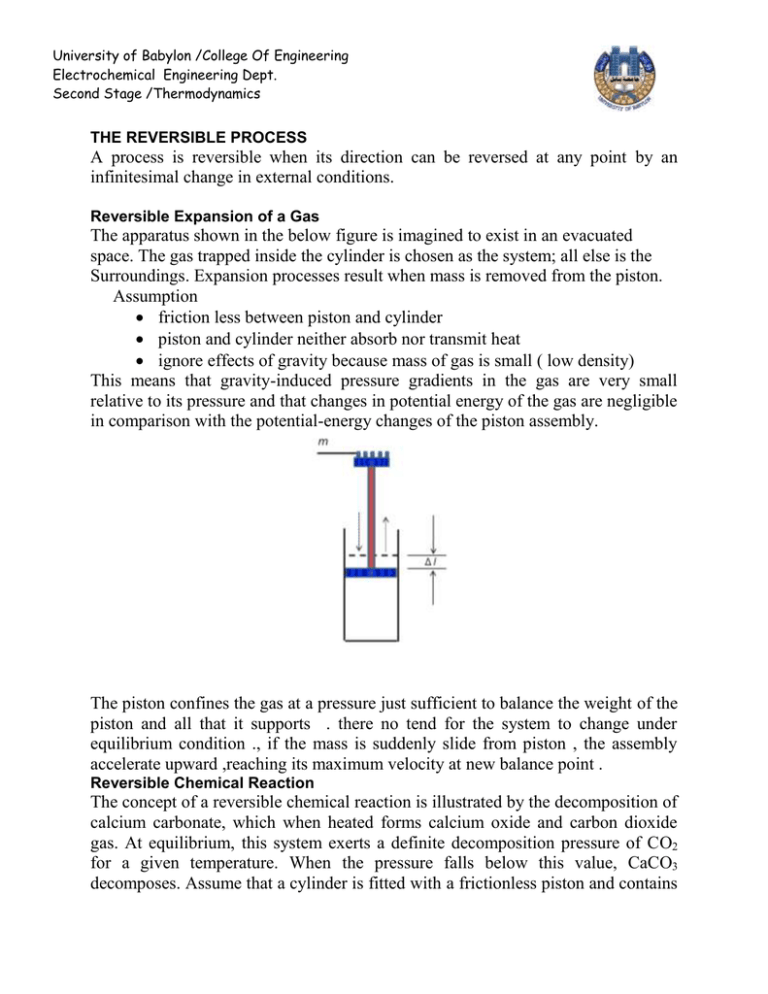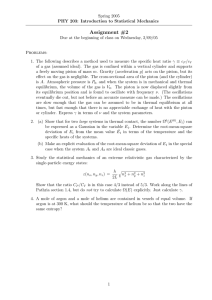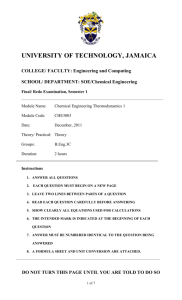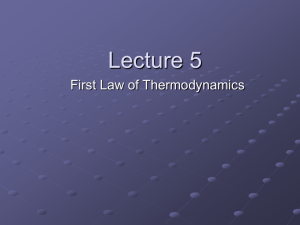University of Babylon /College Of Engineering Electrochemical Engineering Dept.
advertisement

University of Babylon /College Of Engineering Electrochemical Engineering Dept. Second Stage /Thermodynamics THE REVERSIBLE PROCESS A process is reversible when its direction can be reversed at any point by an infinitesimal change in external conditions. Reversible Expansion of a Gas The apparatus shown in the below figure is imagined to exist in an evacuated space. The gas trapped inside the cylinder is chosen as the system; all else is the Surroundings. Expansion processes result when mass is removed from the piston. Assumption friction less between piston and cylinder piston and cylinder neither absorb nor transmit heat ignore effects of gravity because mass of gas is small ( low density) This means that gravity-induced pressure gradients in the gas are very small relative to its pressure and that changes in potential energy of the gas are negligible in comparison with the potential-energy changes of the piston assembly. The piston confines the gas at a pressure just sufficient to balance the weight of the piston and all that it supports . there no tend for the system to change under equilibrium condition ., if the mass is suddenly slide from piston , the assembly accelerate upward ,reaching its maximum velocity at new balance point . Reversible Chemical Reaction The concept of a reversible chemical reaction is illustrated by the decomposition of calcium carbonate, which when heated forms calcium oxide and carbon dioxide gas. At equilibrium, this system exerts a definite decomposition pressure of CO2 for a given temperature. When the pressure falls below this value, CaCO3 decomposes. Assume that a cylinder is fitted with a frictionless piston and contains University of Babylon /College Of Engineering Electrochemical Engineering Dept. Second Stage /Thermodynamics CaCO3, CaO, and CO2 in equilibrium. It is immersed in a constant-temperature bath, as shown in below figure , with the temperature adjusted to a value such that the decomposition pressure is just sufficient to balance the weight on the piston If the weight is differentially increased, the CO2 pressure rises differentially, and CO2 combines with CaO to form CaCO3, allowing the weight to fall slowly . The heat given off by this reaction raises the temperature in the cylinder, and heat flows to the bath. Decreasing the weight differentially sets off the opposite chain of events. Chemical reactions can sometimes be carried out in an electrolytic cell, and in this case they may be held in balance by an applied potential difference. If such a cell consists of two electrodes, one of zinc and the other of platinum, immersed in an aqueous solution of hydrochloric acid, the reaction that occurs is: Zn + 2HCl ↔ ZnCl2+H2 The work of compression or expansion of a gas caused by the differential displacement of a piston in a cylinder is dW pdV t The work done on the system is given by this equation only reversible process. The second requirement is that the system be no more than infinitesimally displaced from mechanical equilibrium with its surroundings. Processes for which these requirements are met are said to be mechanically reversible, and equation may be integrated V2 dW pdV t V1







